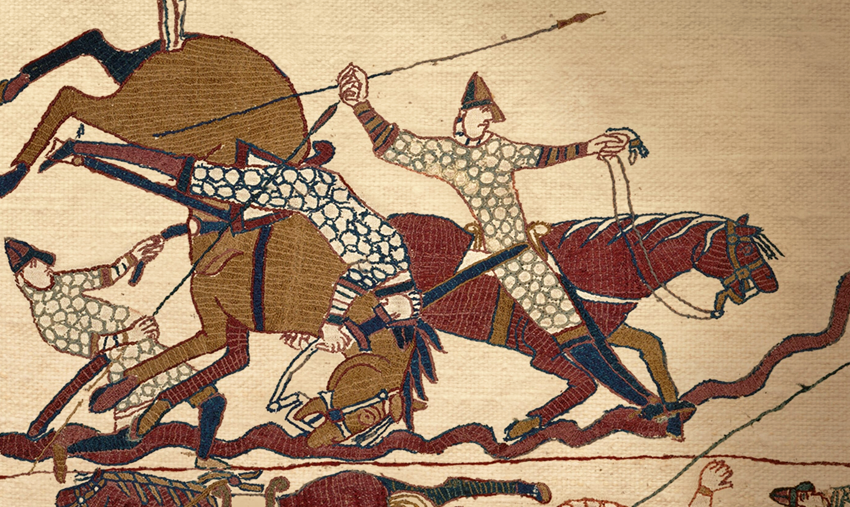The Norman Conquest of England involved invaders from what French region?
Don't scroll until you've answered.

Duh! is a weekly column that gives circuitous answers to obvious questions. If you dig it, you can find 100 more of these essays in the Geeks Who Drink book, Duh!.
In a few weeks, we’ll celebrate the 80th anniversary of the last time some people boated across the English Channel with designs on conquering the other side. But the Allies’ Nazi beatdown in Normandy was hardly the first such occasion.
You should intuitively guess, either by phonics or geography, that the Normans came from Normandy. But translate the name into Parseltongue1 and you’ll find out that Normandy was not their first home: They were Norsemen, aka Vikings, those guys who plundered every coastline in Northern and Western Europe (and Canada!) from about 850 to 1100 CE. In 911, Charles III of France2 finally decided he’d seen his northern beaches plundered often enough to just sign them over to the awesomely-named Rollo, who became the first Duke of Normandy.
A century and a half after that, Duke William decided to help himself to the big island up north, and promptly built a castle that came to be known as the Tower of London, whose central keep is made of authentic Normandy limestone. But this essay is about a landmark that’s actually in Normandy, one that was built not much later: the abbey of Mont-Saint-Michel.
Located right in the crotch between the Cotentin and Breton peninsulas,3 this spot draws 3 million visitors a year, and it’s not hard to see why: The tip of its spire looms 550 feet above sea level, on an island that’s just 1,000 feet across–practically the same proportions as the Great Pyramid of Giza, but way prettier (and more humid).
As it happens, the construction of the abbey was occasioned by yet another conquest, this time from the mainland. In 1203, Philip II of France launched an invasion to take Normandy back from the English, and in the process the island’s original 8th-century chapel was burned down. Violence against monks is never a great look, so Philip paid for the construction of a new Gothic abbey aptly called La Merveille (“The Wonder”), which was fortified and expanded over the centuries until assuming its current imposing stature (and national historic monument status) in the 1800s.
France being France, the complex changed hands (and/or uses) a few more times during that period:
- It was besieged twice by England, in 1423 and 1433, during the Hundred Years’ War.
- For some 400 years, starting in the 15th century, it was used as a sort of French Alcatraz. With their bent toward anti-religious vandalism, the French Revolutionaries must have especially relished locking up dissidents there.
- Along with the rest of France, it was captured by the Third Reich in June 1940. Some Luftwaffe officers lived in the abbey itself, and many others in the hotels around it. In August 1945, the island was liberated by a single American private. Why Matt Damon didn’t play that guy, we may never know.
Was Khufu anywhere near as interesting as all that? I think not.
- Please, someone come up with another go-to reference for snake languages, so we won’t have to obliquely hat-tip She Who Must Not Be Named.
- “Charles the Simple” was a great-great-grandson of Charlemagne – “Charles the Great.” All the other Charleses in that dynasty had less-grand nicknames to match their less-grand administrative abilities: in order, the Bald, the Fat, and the Simple.
- Brest is in Brittany, and its name means “hill.” Meanwhile, Manchester is in Britain, and means “breast-shaped hill.” (The “Man-” part comes from the same root as “mammary” and “mammal.”)
